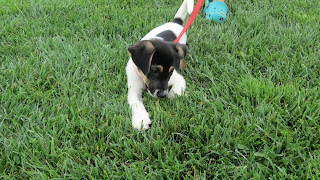When your pet is dirty from another fun-filled day, the last thing he wants to do is take a bath, and he might just get what he wants. Why is this? Although bathing your dog has its benefits, bathing a rabbit, hamster, chinchilla or bird may be a very bad idea.
It May Be Soft Now
Your chinchilla probably has extremely soft and cuddly fur, right? If you think he needs a bath and you plop him into the tub, that fur will get all oily and crusty. Kind of like when you put a super-soft fleecy blanket or pair of pajamas in the dryer and you put it on HIGH instead of LOW. That's what it'll be like for poor old Dusty once
his fur dries. Chinchillas get those bath benefits from sand, or self-grooming. So if you are thinking about putting your chinchilla in the tub, think again. He will put matters into his own paws, or to be more exact, his own
tongue.
Birds of a Feather Bathe Together
Ever see a flock of birds bathing in a puddle from last rainfall? Believe it or not, those birds are substituting the puddle for a birdbath. Your pet parakeet, finch, or other pet bird bathes in this way too.
However, they don't need to be bathed in the way you would bathe a dog. (Have you ever seen Bird Shampoo in the store?) Some birds like to sit under a gentle slowly-running faucet, probably because it is like the splashes of water from a water-fall. Others don't like water at all.
Hare today, gone tomorrow.....
Bunnies may have the ability to swim, but they can get way too cold. Besides, who needs water when you have a built-in personal grooming machine--your tongue! There is no need to bathe your rabbit, much less let him swim around in a bathtub or pool. Rabbits' fur don't trap heat like other animals, because wild rabbits would stay in warrens during the winter cold. The fur also does a bad job of avoiding wet liquid to seep into the fur--so wild rabbits would instinctively
stay away from any deep water sites*. Even if you see the "Bunny Bath" shampoo in pet stores, you should not get this. Domestic rabbits have to let their owners do most of the things they would do in the wild by themselves; and that includes food, water, and most importantly, shelter. So, if you were a rabbit and you trusted your owner to take care of you, do you think you would like it if someone plunged you into deep water? Probably not. Plus, your pet could get pneumonia, and that explains the title "Hare today, gone tomorrow...."! (just kidding)
Tip: If your [senior] bunny does have grooming problems because of arthritis and his lower body is getting soiled badly, causing infection, give him a "bottom bath"(see 'In Certain Circumstances...)
Hammie Help
Hamsters are sensitive animals in more ways then one. Their skin have special oils that hamsters in the desert used to mark their territory. When meeting other hamsters, you may notice your pet's sides have wet, blotchy stains that are clear. These disappear within a few hours. Back to the subject, though: If you bathe your hamster at all, these scent gland areas could get infected and crusty! Hamsters either clean themselves using dust baths or self-grooming, but remember, do NOT use any water if your hamster is dirty. Use a dry, new toothbrush and a soft cloth to gently rub off dirt or any food stains. Be careful around the underbelly and face area.
In Certain Circumstances....
In medical conditions, usually during your pet's senior years, you run into situations that bend the rules a little bit. Senior "Buns" (Bunnies) can get arthritis and it becomes difficult to reach vital areas when grooming, if you know what I mean. If it gets so bad your bunny is suffering, then turn on the faucet halfway and pick up your bunny, supporting its hindquarters and laying his head and neck against your chest. Place his bottom under the warm-water faucet until all the gross stuff looks gone. If it isn't clean yet, take a warm washcloth that has been squeezed out until there is hardly any water there. Gently clean the rest with the washcloth until it is completely clean and then dry him off. The good thing is that senior bunnies don't kick or wiggle like the younger ones would.
Some vets use water to clean out wounds too, and that's okay. Just remember that that is only when it is your pet's last chance to live, and it's for a good reason!
* Swamp rabbits are the only kind of wild rabbits that live near the swamps. When faced with a predator, they simply jump into the water and swim as fast as their webbed feet can take them. Fascinating, huh?


















































